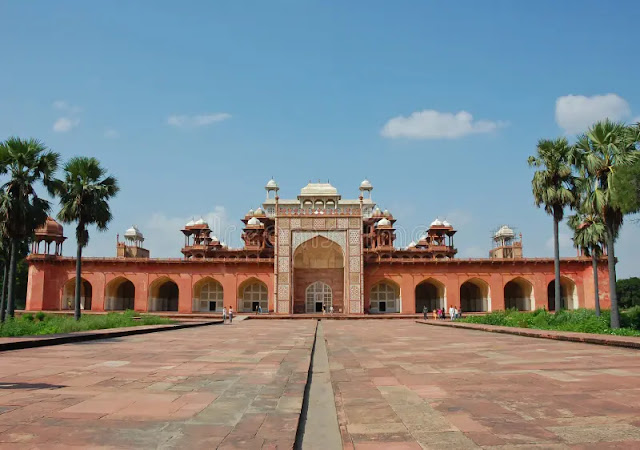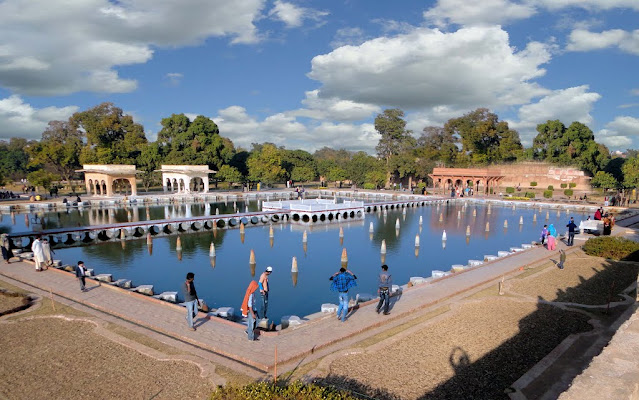SHALIMAR GARDEN LAHORE
HISTORICAL PLACE OF PAKISTAN
In the centre
of Lahore, Pakistan, Shalimar Garden is a gorgeous masterpiece and a historical
site. The Mughal Emperor Shah Jahan
constructed the Shalimar Garden, a famous UNESCO World Heritage Site, in the 17th
century. It is a tribute to the splendor and magnificence of the Mughal Empire.
We will dig into Shalimar Garden's enthralling past, examine its historical
significance, and uncover its alluring aspects in this blog article. It is a
must-visit location for tourists and history buffs alike.
Who
constructed Pakistan's Shalimar Garden?
Emperor Shah
Jahan, who ruled the Mughal Empire from 1628 to 1658, commissioned Shalimar
Garden. The garden was built starting in 1637 and was finished in 1641. The
emperor and his royal family used it as a private retreat when it was first
constructed.
Value
of the Shalimar Garden
Shalimar Garden
is incredibly significant historically and culturally. During the Mughal era,
it represented wealth and power, displaying the Mughal empire's excellent taste
and creative prowess. The garden was intended to depict the harmony between
people and environment, not just serve as a leisure area.
The
Shalimar Garden Saga
The Shalimar
Garden tale is rich in romance and grace. According to legend, Emperor Shah
Jahan dreamed up a lavish garden where he and his wife, Empress Mumtaz Mahal,
could escape and savour their love. He gave the job of creating the garden to
renowned architect Ali Mardan Khan.
Emperor Shah
Jahan, the fifth Mughal emperor, ordered the construction of Shalimar Bagh in
1641. It was constructed as a symbol of his devotion and affection for his
wife, Empress Nur Jahan. The original name of the garden was "Bagh-e-Faiz
Bakhsh," which translates to "The Bountiful Garden."
Shalimar Bagh
was conceptualized and built by eminent architect and poet Ali Mardan Khan. He
built a spectacular garden complex with three major terraces that covered more
than 80 acres (32 hectares): the upper terrace, middle terrace, and lower
terrace.
The royal
family had exclusive use of the top terrace, also known as "Farah
Baksh" or "Bestower of Pleasure." It was where the imperial
family would unwind and take in the beauty of the garden. It also contained the
emperor's private rooms.
The courtiers
and nobles had access to the middle terrace, also called "Faiz Baksh"
or "Bestower of Goodness." It included lavish marble pools,
decorative fountains, and exquisite pavilions.
The public
could access the lower terrace, known as "Hayat Baksh" or
"Bestower of Life," which had a wide variety of fruit trees,
flowerbeds, and flowing waterfalls. The Ravi River supplied the ponds in this
area with water, creating a tranquil atmosphere.
The arrangement
of the garden combined traditional Islamic and Persian garden design ideas,
with a focus on symmetry, geometric patterns, and water elements. The fountains
were fueled by a natural gradient, which allowed water to flow through the
garden in a regulated fashion.
Shalimar Bagh
had several phases of neglect and repair throughout the years. During the Sikh
and British eras, the garden sustained substantial damage, but it was finally
brought back to its former splendour.
Shalimar Bagh
and other Lahore historical monuments were named UNESCO World Heritage
monuments in 1981 in recognition of their exceptional global value and cultural
importance.
The Mughal
era's aesthetic genius and architectural ability are still on display in
Shalimar Bagh today. It draws tourists from all over the world who are drawn to
it by its magnificent gardens, elaborate marble work, and tranquil atmosphere.
The garden's annual Shalimar Festival, which features a Mughal theme,
highlights classical music and dance acts, strengthening its cultural
significance.
The beautifully
designed and laid out Shalimar Garden, also known as the "Abode of
Love," was done in the Persian Charbagh style, which represents the
Islamic idea of heaven.
The park was
separated into three terraces, each of which represented a different aspect of
life. The first terrace was reserved for the general populace, the second for
the aristocracy, and the third terrace was used solely by the emperor and his
family.
Shalimar
Garden Characteristics
Design: Shalimar Garden's layout and design include symmetrical paths,
attractive lakes, and terraced flowerbeds. It covers an area of nearly 80
acres. The garden's layout adheres to the exact proportions and balance of
Islamic geometry.
Waterworks: The design of the garden emphasises the significance of water. The
garden is divided into various portions by a canal known as the Shah Nahar, or
the Royal Water Channel. A calming and peaceful atmosphere is produced by the
water cascading from terrace to terrace.
Diwan-i-Khas: The Diwan-i-Khas, a regal pavilion that functioned as the
emperor's personal audience hall, is located in the middle of the park. This
amazing building has exquisite paintings, elaborate marble sculptures, and a
magnificent marble throne.
Marble
Pavilions: Adding to the architectural splendour of
Shalimar Garden are a number of marble pavilions and other buildings. These
pavilions give shade from the sun and beautiful garden views.
Fragrant
Flowerbeds: The garden features a wide variety
of aromatic blooms and immaculately maintained flowerbeds. e. aromatic
Flowerbeds. As visitors stroll around the garden's paths, they are treated to a
riot of colours and entrancing smells.
Char Bagh: An essential component of the Shalimar Garden's design is the Char
Bagh, also known as the four-part garden. The four quadrants of the garden
stand in for the four rivers of paradise stated in the Qur'an. A symphony of
flora and geometric patterns is created as a result of further subdividing each
quadrant into smaller pieces.
Conclusion
The Mughal
Empire was known for its brilliant architecture and refined aesthetics, as seen
by Shalimar Garden. Visitors from all over the globe are still mesmerised by
its beautiful fusion of nature, water, and building beauty. A trip back in time
may be had by visiting Shalimar Garden, where one can take in the splendour of
the Mughal era and take in the peace of this magnificent oasis.
Raheel Rustam








1 Comments
Very nice and informative
ReplyDelete